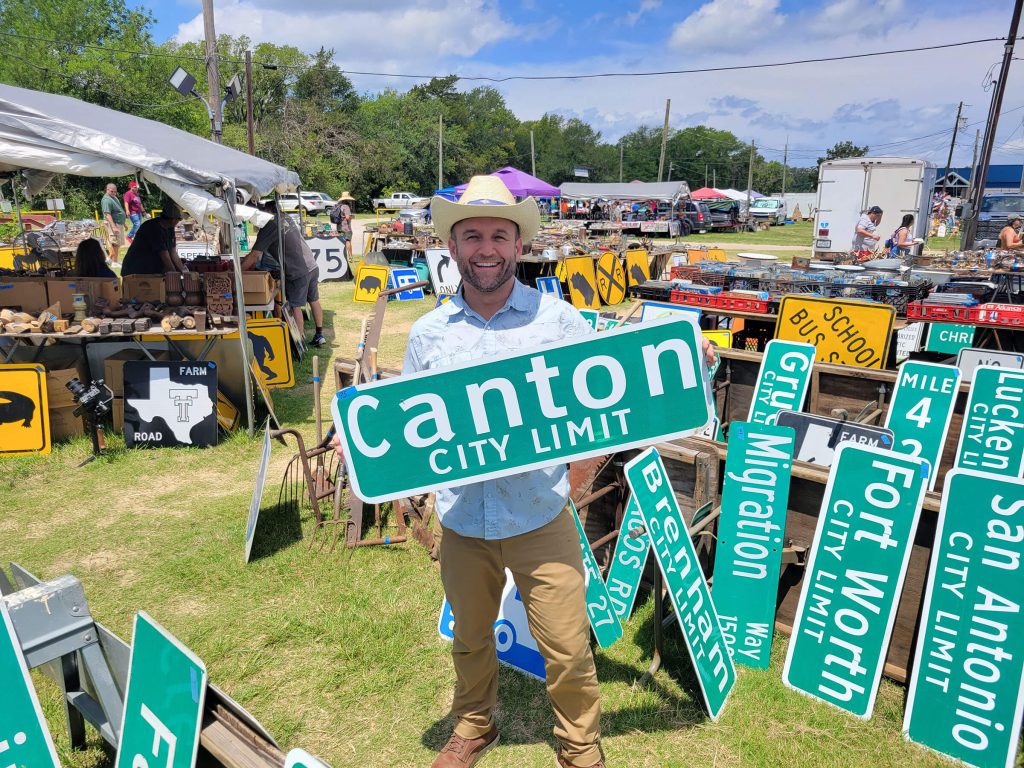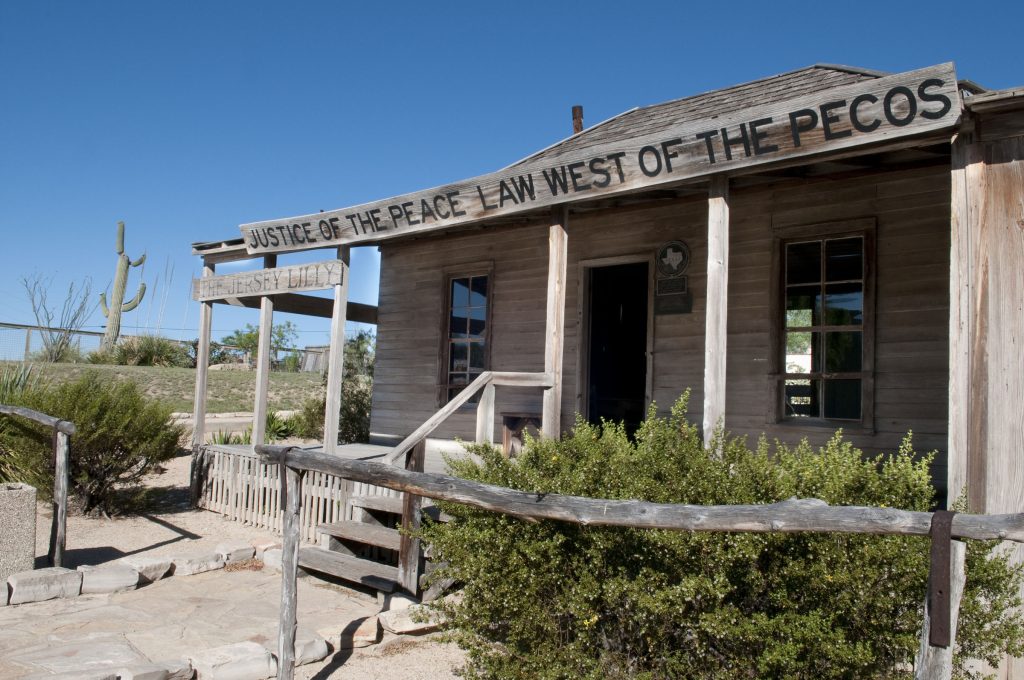
Photo by Randall Maxwell
When it comes to tales about Judge Roy Bean, “the Law West of the Pecos,” it’s dern near impossible to stomp out a whopper, once it gets into circulation. The latest downright “lie” told about the Old West’s most notorious justice of the peace concerns the manner in which his ornery honor departed this earthly realm.
It’s a documented fact that Bean died of natural causes in 1903. That’s what folks tell you at the Judge Roy Bean Visitor Center, in the village of Langtry on the Rio Grande, which preserves Bean’s wooden courtroom/saloon building, called the Jersey Lilly, and his one-room adobe Opera House. Nowadays, some Langtry visitors insist on believing another version of the judge’s demise. They’ve all seen the TV movie based on Larry McMurtry’s 1993 novel, Streets of Laredo. In the film, a young desperado dispatches Bean (played by actor Ned Beatty) to his final reward with a hail of gunfire.
That’s an artistic “lie,” all right, but on the other hand, some might argue that the judge needed shooting. His peculiar rulings, usually aimed at fattening his office coffers, rubbed many folks the wrong way. And there was no appeal when the Law West of the Pecos banged the gavel, which in Bean’s case happened to be a six-shooter. Buying a round of drinks for the judge and jury served as a handy punishment for minor offenses.
In one oft-told story, the judge fined a corpse $40 (the amount in the man’s pocket) for carrying a concealed weapon. Then there was the time several workers fell while building the 321-foot-high Pecos River bridge. Though a couple of the men clung to life, Roy, anxious to get his paws on the $5-per-body inquest fee, pronounced them dead. Another standard Bean tale, about his dismissal of murder charges because the victim was a Chinese railroad worker (a group that did not patronize his saloon), hardly makes him out a model of political correctness.
Even so, long before he left this world, Roy Bean and his borderland outpost of law and libation had become a living Wild West legend, not to mention a genuine tourist attraction. When the train stopped at the Langtry depot, passengers headed for the Lilly. Some bought beers for Bean’s pet bear, Bruno, which the mellow beast guzzled with delight. Many heard Roy praise the beauty of English actress Lillie Langtry as he gazed upon her picture behind the bar and swore she’d be coming to his bordertown, someday, to sing in his Opera House. And though the Texas Rangers had recommended Bean for justice of the peace in 1882 at the railroad-building camps in present Val Verde County, Roy gained his greatest fame in 1896, when he became one of the few men who ever buffaloed that elite law- enforcement agency, by staging an illegal world-championship prizefight on a sandbar on the Mexican side of the Rio Grande.
“I can’t remember when I didn’t hear Judge Roy Bean stories,” says Langtry native Jack Skiles. As a child in the 1930s. Jack played “Tom Mix” and “Cowboys and Indians” in the ghostly shell of the Jersey Lilly. In 1963, he began taping old- timers’ memories of Bean, saving the most intriguing for his 1996 book, Judge Roy Bean Country. “Most people called him an old reprobate,” says Jack, but he adds that many of those same folks remembered the judge fondly. Beula Burdwell Farley, who lived with her family in one of three small houses the judge construct- ed near his Opera House, told Jack that “Roy Bean was a smart ol booger. He had his faults, but listen, he was a good man at heart. He might have been a murderer and a robber, and a thief, but he was good in his own way. He was the best-hearted old fellow you ever saw.”
It’s no surprise that, where the judge is concerned, fact and legend have intermingled beyond repair. Bean himself was one of the biggest liars to ever bask in the Texas sun. In fact, he gilded the lily with such luster that, for years after his death, a few spellbound locals continued stretching the untruths to inter- viewers. As the late C.L. Sonnichsen put it in his 1943 biography, The Story of Roy Bean–Law West of the Pecos, “the Roy Bean myth has had considerable help from Roy Bean.”
In photographs and the popular imagination, the judge has always seemed older than the ancient limestone bluffs that rise above the Rio Grande at Langtry. With his spiky white whiskers and leathery face, often topped in later years by a sombrero, the portly saloon owner looked as though he’d sprouted from the rock like a cactus plant. According to census records examined by Jack Skiles and his wife, Wilmuth, Roy Bean began life in the Kentucky hills around 1835, not 10 years earlier as previously thought. The Langtry couple also unearthed the judge’s full name: Phantly Roy Bean.
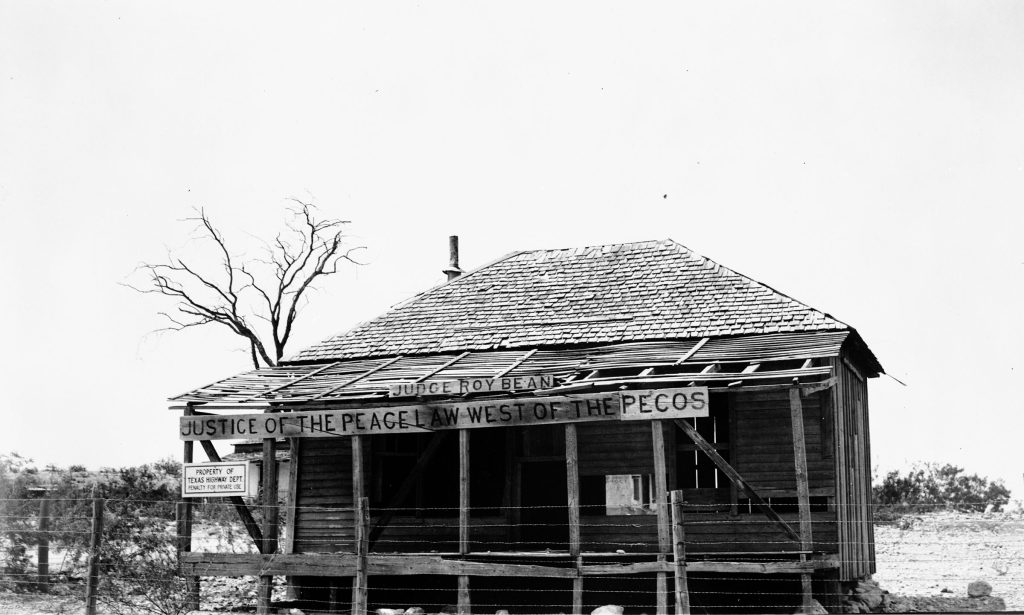
The Jersey Lilly circa 1939. TxDOT photo
Naturally, Phantly Roy discarded the dandified part of his handle when, as a teenager, he followed his two older brothers and headed west. He often boasted that he drove an am- munition train for General Zachary Taylor in the Mexican War, where Bean met Robert E. Lee and Ulysses Grant. That tale seems too tall to be true, but historians generally agree that, around the late 1840s, young Roy joined his brother Sam on the trader’s trail that stretched from Independence, Missouri, to Santa Fe, New Mexico Territory, and Chihuahua, Mexico.
In Chihuahua, Bean & Bean operated a trading post dubbed Los Frijoles by the locals. Teenage Roy took a liking to life in Mexico, savoring señoritas, tequila, and chile con carne made with liver. But after killing a local bandido—so the story goes—he had to flee. In 1851, he showed up in San Diego, California, where brother Josh had been promoted from town mayor to a major general of the state militia.
Josh owned a saloon, where he tutored Roy in the art of parting patrons from their dinero. “[Royl was quite a dashing figure,” wrote Major Horace Bell in his 1927 book, Reminiscences of a Ranger, “and was soon prancing around the old town appar-eled in all the gay trappings of a California caballero on a spirited steed with silver-mounted saddle and bridle.” Noting Roy’sappeal to San Diego señoritas, Major Bell continued with a description that might have startled those who saw the judge in hislater years at Langtry: “Roy Bean was an Adonis. His complexion was as fair and rosy as a girl’s. Hair black and silky, figure above medium height and perfect. In manners a Chesterfieldian gallant.”
Sometime after Josh was killed in San Gabriel in November 1852, Roy left the West Coast. (A couple of duels influenced the departure-after one duel, Roy may have been unsuccessfully hanged. Some accounts say the necktie party left a mark around his neck, visible the rest of his life, which he tried to conceal with bandannas.) At some point in the 1850s, he reunited with his brother Sam in Mesilla, New Mexico Territory, where Sam was sheriff of Doña Ana County. Sam also ran a combination store, saloon, cafe, hotel, and gambling hall, where the younger Bean continued his “education.”
When the Civil War broke out, Roy headed for San Antonio. A Confederate sympathizer, he ran cattle to Matamoros, where they were loaded onto British ships in defiance of the Union blockade. In 1866, he married María Anastacia Virginia Chávez, a descendant of aristocratic Canary Islanders who had moved to San Antonio in the 1730s. The tempestuous marriage produced two sons, named Roy and Sam, and daughters christened Zulema and Laura; an adopted son was called John.
After the war, Roy worked as a saloon keeper, freighter, and dairyman (he supposedly cut his milk with minnow-laden water). His neighborhood in south San Antonio came to be known as Beanville, and the Bean home on East Glenn Street still stands. The Bean marriage proved less enduring, and Roy was looking for an escape route in the spring of 1882.
At the time, railroad track was being laid across a vast stretch of West Texas. The Galveston, Harrisburg, and San Antonio line forged west from the Alamo City while the Southern Pacific Railroad toiled to meet it from El Paso. The thousands of workers at the railroad camps would need whiskey, Roy figured, and places to gamble away their pay, so he loaded a wagon and headed for the starkly beautiful country where the Pecos River meets the Rio Grande.
Bean first settled at a camp called Vinegarroon, for the prevalence of a scorpion- like critter by that name. He threw up four rock walls, topped them with a tent. and opened for business. By late July of 1882, Roy had moved a few miles west to the camp at Eagle Nest–the San Antonio Express published a letter from him on the 27th, inviting his Beanville friends to visit his new establishment. After construction of the railroad depot, Eagle Nest became Langtry. Though Roy often boasted of naming the town for Lillie Langtry, the fantasy-love of his life, Southern Pacific officials, in fact, named it for a company engineer. (He did, however, name his saloon for her; Ms. Langtry was called the Jersey Lily because of her lily-white skin and her birthplace, the Isle of Jersey. An itinerant sign-painter added the extra “I” to Bean’s Jersey Lilly.)
The “end of track” railroad camps, dubbed “Hell on Wheels.” attracted “the worst lot of roughs, gamblers, robbers, and pickpockets.…I ever saw,” as one Texas Ranger put it. It was a long, hard ride to Pecos County’s nearest justice of the peace in Fort Stockton, so county commissioners created a new jurisdiction for Langtry. The Rangers suggested Roy Bean for the jp. job, and, on August 2, 1882, the appointment became official.
Before the railroad track was completed in early 1883, the San Antonio Express carried a report on the “bibulous peculiarities” of “Old Roy” and his unique style of “border jurisprudence.” Despite the judge’s love of firewater, the reporter noted, His Honor was “generous, brave, courteous, and a keen lover of fun. He holds court anywhere and carries a pocketful of blank warrants, one of which he will fill out and sign at a minute’s notice.” The reporter had observed the maverick magistrate waving his six-shooter around and drunkenly declaring his authority.
Drunk or sober, Roy sat on the bench until his death-even during the terms when he lost the election. After Langtry became part of newly formed Val Verde County in 1885, a local well-digger won the 1886 race with 25 votes to Bean’s 17. But Bean fussed until the well-digger resigned and the commissioners court created a special precinct west of the Pecos, in which Roy Bean reigned.
Then, in the 1896 race, rival Langtry saloon owner Jesús Torres was declared the winner after Roy received more votes than the number of qualified voters. But after Bean refused to hand over either his notary public seal or his law book. the two men reached a sort of compromise in which each handled the cases on his side of the railroad tracks. Two years later, Roy chased Torres voters from the polls with a shotgun until the sheriff from Del Rio arrived and threatened to chain the judge to his pet bear. The Law West of the Pecos lost that race but won his final two con- tests, in 1900 and 1902.
Jurisprudence Rov Bean-style may seem eccentric, but contrary to the “hang ’em high” bravado displayed in the 1940 film The Westerner (which netted Walter Brennan an Oscar for his portrayal of Bean) and 1972’s The Life and Times of Judge Roy Bean (starring Paul Newman as Bean), the judge never strung up a soul. Instead, some wrongdoers endured Bean’s version of the “scared straight” program: At least one petty thief was “sentenced” to hang and placed in a noose, only to have Bean give him the chance to “escape.” Once, a man who pretended to be crippled collected donations from Jersey Lilly patrons. When Roy discovered the fraud, he ordered the faker placed upon his billiard table, produced a rusty saw, and instructed one of his men to “amputate” a leg. Given the chance to flee, the scoundrel must have run all the way to Del Rio.
Newspaper coverage of his judicial hijinks made Bean famous, but as Jack Skiles notes, the judge’s softer side got less publicity. Everybody knew about his lovesick blues over Lillie, and how he had written to invite her to visit. Moreover, according to old- timers, Roy made sure local widows had wood in the winter, and he provided Christmas presents for area kids. His own children lived with him for long periods in this wild-and-woolly region, and he did his best to shield the younger ones from the local rowdies. He even served as a trustee for the Langtry school.
The judge may have become a bit more lovable in his latter days, but he could still get a burr in his chaps, as evidenced by a 1901 Hondo Herald story. The paper told of three lady passengers strolling around the Langtry depot. When they peeked into the Lilly, Judge Bean appeared. “Look here,” he growled, “whichever one of you is Mrs. Nation, I want you to understand that your hatchet racket don’t go here. I am the law west of the Pecos, and she’s going to be enforced if you cut any capers around here.” (Unbeknown to Bean, prohibitionist Carry Nation was not one of the group.)
At some point in the late 1890s, the original Jersey Lilly burned. The fire mav have occurred in 1899, while Roy was in Del Rio getting his son Sam acquitted on a murder charge. The judge built a smaller saloon, with a billiard room attached, and that Jersev Lilly stands in Langtry today. On a hill behind the saloon, he built the one-room adobe Opera House.
After Bean died in bed in 1903. his descendants sold the buildings to local rancher Will Ike Babb. The Babbs lived in the Opera House, and Will stored hay in the saloon (he tore down the billiard hall to use the wood on his ranch). When Will started to dismantle the famous courtroom/saloon, his wife, Laura, intervened. With a preservationist’s foresight, she predicted, “There’s gonna be people comin’ to see that someday.”
In 1935. as the Texas Centennial drew nigh, the Del Rio Chamber of Commerce alerted the State Parks Board that tourists were hauling off lum ber and other Jersey Lilly souvenirs. In a complicated title trans- fer (Bean had built the Lilly on land owned by the railroad), Laura Babb, Southern Pacific, and other owners of parts of the property signed quit-claim deeds. Roy Bean’s historic courtroom/saloon made the state one heck of a 100th birthday present in 1936, when the Texas Highway Department acquired it.
The state patched up the Jersey Lilly and reopened it to tourists in 1939. In the late ’60s, the highway department built a modern Visitor Center near the saloon, about where the rail- road depot used to sit. A recent remodeling has made the center an even more-refreshing oasis. Visitors can inspect Roy’s Edison phonograph, his handcuffs, and the .41 Smith & Wesson he used as a gavel. Dioramas featuring Disney special effects chronicle his career.
Other “Bean-ana” on display includes his notary public seal, a knife found on the body of a man during an inquest, and Bean’s lone law book, the Revised Statutes of Texas 1879. The judge inscribed the book in 1902, when he presented it to a friend, Langtry storekeeper W.H. Dodd. A deck of cards on view is said to have been cut by Lillie Langtry when she finally visited the town in 1904, almost a year after Roy’s death. A close look at Bean’s walking stick reveals carved portraits of General Custer, Wild Bill Hickok, Buffalo Bill Cody, and other Old West icons.
Further Reading
Look in your bookstore or library for Judge Roy Bean Country by Jack Skiles (Texas Tech Univ. Press, 1996), Dan Stuart’s Fistic Carnival by Leo N. Miletich (Texas A&M Univ. Press, 1994), and The Story of Roy Bean–Law West of the Pecos by C.L. Sonnichsen (out of print, but can still be found in some stores).
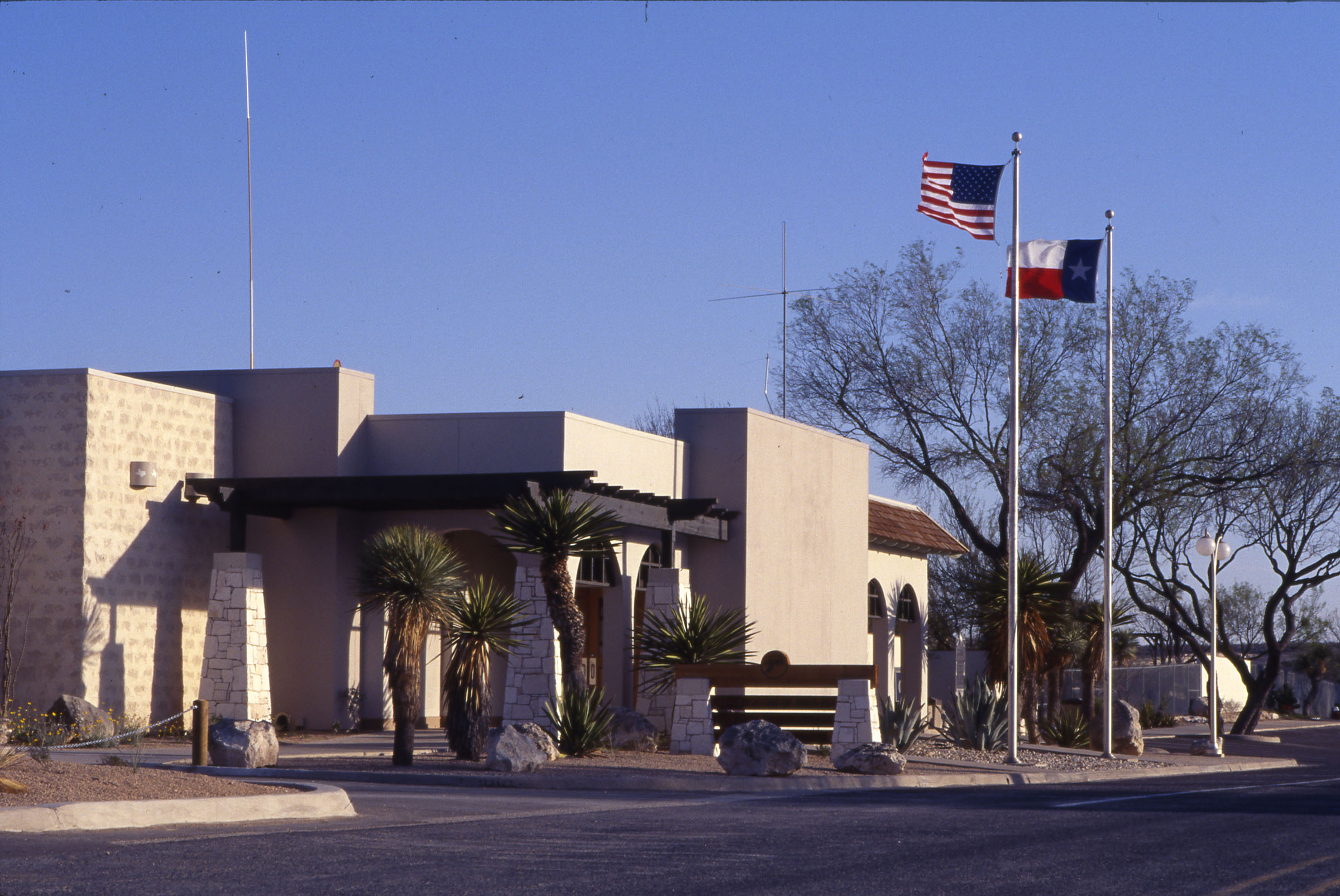
Out back, of course, awaits the main attraction-the Jersey Lilly “herself.” It’s an awesome feeling to step up on that porch, sashay through the doorway, and sense the presence of the Law West of the Pecos. You can almost hear the old goat cussing—or rhapsodizing about his beloved Lillie.
The saloon is “about 60 percent original wood,” says Visitor Center manager Neal Billings. “The wood stove and table are original, but we had to reconstruct the billiard hall and replace the remnants of floorboard that were left in the saloon, plus the ceiling and a new roof. We aged the new boards so they’d look right.” Two of the fancy table legs from the judge’s pool table rest in the billiard hall.
Roy’s one-room adobe Opera House has been restored, too; it was dedicated in March 1998. “My dad operated a private museum in the building in the 1950s” says Neal. The detailed restoration of the modest structure includes an exact replication of the judge’s original block lettering: “ROY BEAN’S OPERA HOUSE TOWN HALL AND SEAT OF JUSTICE.”
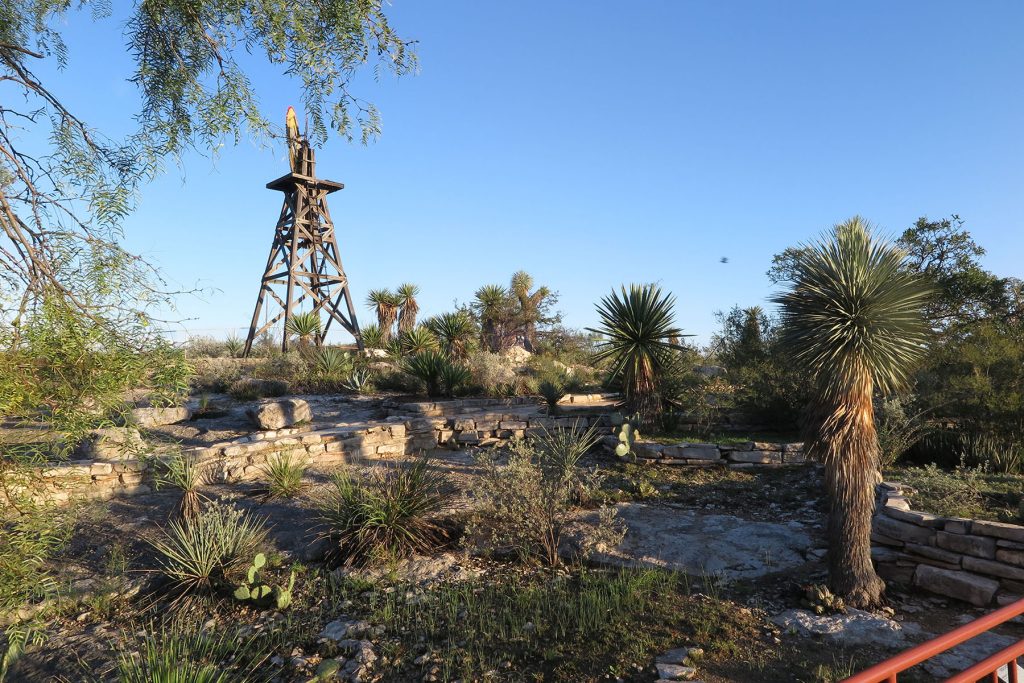
Cactus garden at the Langtry Travel Information Center. Photo by Kevin Stillman
A large cactus garden on the Visitor Center grounds provides a good place to stretch your legs after a long West Texas drive. Along the pathways, lined with ocotillo, sotol, and other desert flora, signs explain the plants’ uses for medicine and food.
About 80,000 people a year come to Langtry to walk in the footsteps of the Law West of the Pecos. “Many ask where our hanging tree is,” says travel counselor Ginger Harrell. With a wink to Roy Bean’s frontier humor, travel counselors point to a ragged mesquite trunk (all that’s left of the local “hanging tree”), before explaining that the judge used it only to chain up drunks.
Travel counselor Brenda Baker says that once in a while, someone will stop in to complain about the state’s making a fuss over such a character as Judge Roy Bean. To counter that sentiment, Jack Skiles offers the words of U.S. District Court Judge T.A. Falvey, printed in the El Paso Herald in 1914: “That man did a world of good,” said Judge Falvey. “He was the man for the place. The rough community where he had settled would have tolerated no enforcement of the law as it was print- ed on the statute books. But they tolerated Bean, because he was both law and equity, right and justice. He filled a place that could not have been filled by any other man…
“His decisions were not always according to the law and the fact, but they were accepted and that was the big point. Roy Bean’s part in the pioneer history of West Texas cannot be written in a page. He was what he claimed to be: the Law West of the Pecos.”



